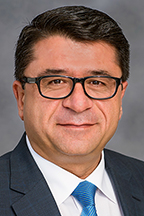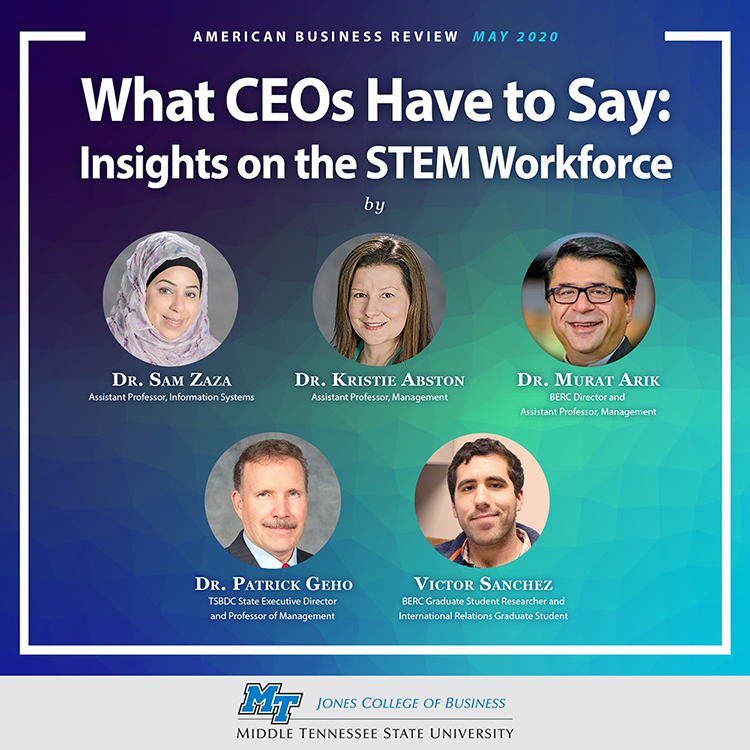A recent study from the Business and Economic Research Center at MTSU examines ways to strengthen the workforce of professionals in the STEM fields of science, technology, engineering, and mathematics.

Dr. Murat Arik
The newly published research from BERC is part of a larger economic development project, “STEM Workforce Dynamics in the Tennessee Valley Corridor,” sponsored by the Tennessee Small Business Development Center, or TSBDC. The project sought C-suite executives’ and managers’ opinions from multiple U.S. states.
As labor market analysts identify a shortage of qualified workers, the demand to fill STEM jobs continues to increase. To address this concern, Murat Arik, Ph.D., director of the BERC, led a collaborative effort with the TSBDC to gather the insight of several business executives in Georgia who employ STEM workers.
“Data in this study was collected from 45 CEOs in Georgia, where a large number of Fortune 500 companies are based. Georgia has the highest-ranked workforce training program in the country, which further provided an appropriate baseline for analysis,” Arik said.

The study uncovers CEOs’ perspectives on four key points in establishing and maintaining a skilled STEM workforce: the roles of parents, educators, businesses and government.
CEOs indicated that parental involvement is instrumental in helping support their children’s STEM knowledge.
Surveyed business leaders identified the educational system as a starting point to develop a steady, sustainable STEM pipeline. They stated that educators are the best point of contact to inspire and introduce STEM to children.
 To further support from industry involvement, CEOs suggested that businesses host local events in collaboration with local communities and schools, to make it part of their strategic campaign to advertise and be advocates for the STEM field.
To further support from industry involvement, CEOs suggested that businesses host local events in collaboration with local communities and schools, to make it part of their strategic campaign to advertise and be advocates for the STEM field.
CEOs indicated that the role of government is important in actively supporting job placements for STEM graduates in the STEM industry.
The findings conclude that continued collaboration between those four key elements can help patch the leaks in the STEM workforce, increasing engagement and increasing the supply of skilled STEM workers in the United States.
The study by Arik, “What CEOs Have to Say: Insights on the STEM Workforce,” is co-authored by Sam Zaza, Ph.D.; Kristie Abston, Ph.D.; Patrick Geho, Ph.D.; and BERC graduate student researcher Victor Sanchez. The article is published in the American Business Review: Vol. 23, No. 1, Article 9.
For more information about MTSU’s Business and Economic Research Center, part of the Jennings A. Jones College of Business, visit www.mtsu.edu/berc.
— Brian Delaney (Brian.Delaney@mtsu.edu)

COMMENTS ARE OFF THIS POST